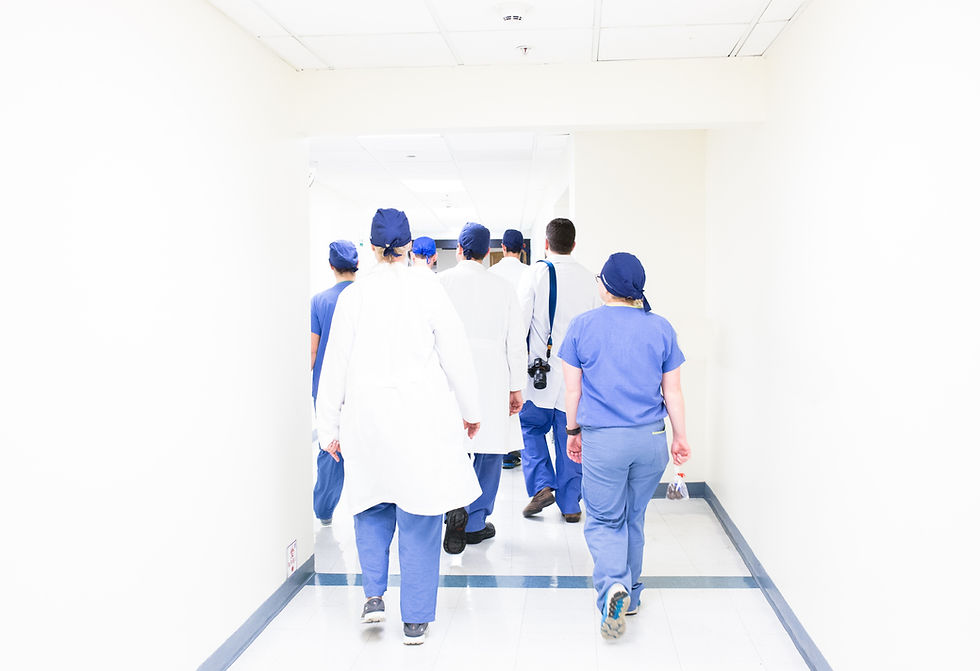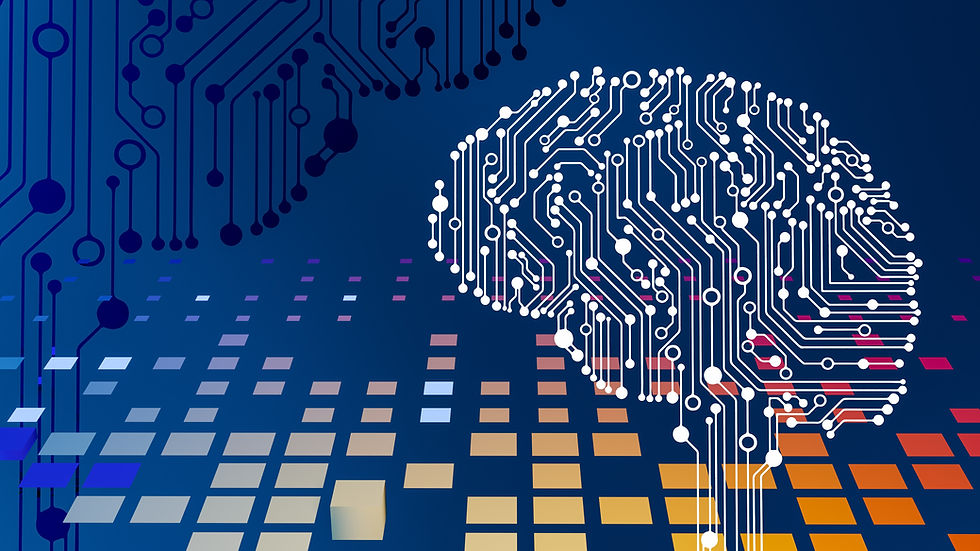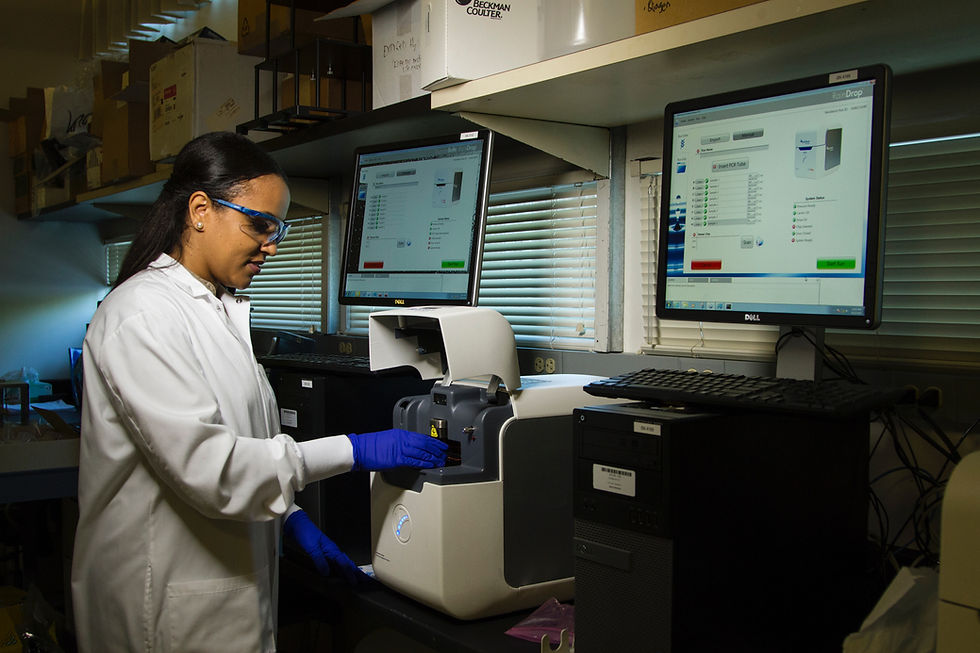Revolutionizing Healthcare: The Role of Machine Learning in Mobile Tele-Health
- info058715
- Apr 3
- 5 min read
Mobile tele-health programs are transforming healthcare delivery in resource-limited settings, providing essential services and diagnostic support where traditional healthcare infrastructure is scarce. From mobile phones to portable ultrasound devices, the integration of technology into healthcare has improved access, efficiency, and the quality of care. One powerful force driving this transformation is Machine Learning (ML)—a subset of artificial intelligence (AI) that enables systems to learn from data and make predictions or decisions without explicit programming. This article explores how ML is applied in mobile tele-health programs, enhancing healthcare delivery, and tackling challenges in underserved regions.
The Role of Machine Learning in Mobile Tele-Health
In resource-constrained environments, the integration of ML into mobile tele-health platforms is a game-changer. Machine learning algorithms can analyze vast amounts of healthcare data, making it possible for health workers—who may have limited experience or training—to deliver better diagnostics, treatment decisions, and monitoring of patients. ML can be applied across a variety of tasks within mobile tele-health, including diagnostic assistance, predictive analytics, patient monitoring, and decision support.
1. Assisting with Diagnostic Accuracy
One of the primary applications of ML in mobile tele-health is improving diagnostic accuracy. In many resource-limited settings, health workers may not have access to advanced diagnostic tools or specialized medical expertise. ML can provide these workers with the support they need to diagnose diseases and conditions more accurately.
Oral Cancer Diagnosis (Oscan)
For example, the Oscan mobile tele-health tool enables health workers to capture images of oral lesions using their mobile phone’s camera. These images are then sent to remote experts for analysis and diagnosis. However, ML can enhance this process by analyzing the images in real-time, identifying early signs of cancer or other oral conditions. By training ML models on large datasets of oral lesion images, these systems can assist health workers by providing instant feedback and flagging potential cancerous lesions. This assists workers in making quicker and more accurate diagnoses, ultimately leading to better patient outcomes.
Cervical Cancer Screening (eC3)
Similarly, the eC3 mobile cervical cancer screening tool relies on health workers capturing images of suspicious cervical lesions using mobile phone cameras. ML algorithms can be applied to analyze these images, automatically detecting patterns indicative of cancer or precancerous cells. ML can help health workers distinguish between benign and malignant lesions, reducing the risk of misdiagnosis and enabling quicker referrals to specialists. Furthermore, the algorithm can learn from ongoing data and improve its predictive accuracy over time, ensuring that the system becomes more reliable as more data is gathered.
2. Predictive Analytics for Patient Outcomes
Another critical application of ML in mobile tele-health is predictive analytics, where ML algorithms analyze patient data to predict health outcomes. This can be especially useful in settings where patients may not have access to continuous monitoring or follow-up care.
Maternal and Child Health (Chipatala Cha Pa Foni)
Programs like Chipatala Cha Pa Foni in Malawi provide maternal and child health information and referrals through mobile phones. ML algorithms can enhance this system by predicting which patients may be at higher risk for complications during pregnancy or childbirth. By analyzing data such as age, previous medical history, symptoms, and other health parameters, the system can flag high-risk pregnancies and direct health workers to provide more immediate care or refer patients to higher-level facilities. This predictive capability allows for better allocation of resources and more timely interventions.
Tuberculosis Screening (eMocha TB Detect)
eMocha TB Detect is a mobile application that streams multimedia education content and provides tuberculosis (TB) screening tools. ML can be incorporated into the application to analyze patients’ symptoms and screening data, helping healthcare workers predict the likelihood of a patient having TB. The system can use historical data to recognize patterns in symptoms and imaging results, providing a more accurate assessment of the patient’s condition. This can be particularly useful in resource-limited areas, where healthcare workers may have limited training in TB diagnostics.
3. Remote Monitoring and Early Detection
For many chronic conditions and diseases, early detection is key to improving patient outcomes. Mobile tele-health programs equipped with ML can monitor patients remotely, identify early warning signs, and alert health workers before conditions worsen.
Portable Ultrasound Devices (VScan, MobiUS)
Portable ultrasound devices like VScan and MobiUS offer on-the-go imaging capabilities for health workers in remote settings. These devices, when paired with mobile phones, allow health workers to capture ultrasound images and transmit them to specialists for remote interpretation. ML can be integrated into these devices to provide real-time analysis of ultrasound images, flagging potential abnormalities such as tumors or organ dysfunction. This enables health workers to receive instant feedback and take appropriate action, improving the speed and accuracy of diagnosis.
Chronic Disease Monitoring
Chronic diseases like diabetes and hypertension are common in many resource-limited regions. Mobile tele-health applications can help monitor these conditions by collecting data from patients, such as blood pressure readings, glucose levels, and other health metrics. ML can then analyze this data to detect patterns and predict when a patient’s condition may worsen, allowing for timely intervention before an emergency arises. For example, ML models could identify a patient at risk of a hypertensive crisis based on their historical health data and send alerts to both the patient and the healthcare provider.
4. Decision Support Systems
ML-powered decision support systems are another important component of mobile tele-health applications. These systems assist healthcare providers in making informed decisions based on available data, which is especially important in resource-limited settings where expertise may be lacking.
Sana Decision Support in Rural India
In rural South India, the Sana platform links local health workers with specialists at dental hospitals, providing decision support for the diagnosis of oral cancer. Sana integrates ML algorithms to analyze patient data and medical images, suggesting potential diagnoses and treatment pathways. The system continuously learns from the data it receives, improving its accuracy over time and providing health workers with evidence-based guidance, even when specialists are not physically present.
MDNet in Ghana and Liberia
In countries like Ghana and Liberia, MDNet connects health providers in remote regions through a closed user group. ML can enhance this platform by analyzing patient data, prioritizing cases, and offering real-time decision support. For example, ML could assist health providers by suggesting the most likely diagnosis based on patient symptoms, streamlining the decision-making process and reducing diagnostic errors in areas with limited access to specialized care.
5. Improving Healthcare Delivery at Scale
The scalability of mobile tele-health programs is another area where ML can have a significant impact. As mobile phone penetration increases and healthcare systems become more reliant on digital solutions, the ability to scale tele-health programs efficiently becomes crucial. ML models can help healthcare systems manage large amounts of data and optimize resource allocation. For example, ML algorithms can identify areas with high patient demand or predict seasonal outbreaks of diseases, allowing health organizations to better prepare and deploy resources.
Challenges to Implementing ML in Mobile Tele-Health
Despite the significant benefits, there are challenges to integrating ML into mobile tele-health programs. Data privacy and security are major concerns, particularly when it comes to transmitting sensitive medical information over mobile networks. Furthermore, limited internet access in remote areas may hinder the effectiveness of cloud-based ML models. Additionally, there is the challenge of training healthcare workers to use ML-powered tools effectively, especially in regions where digital literacy may be low.
Conclusion
Machine learning has the potential to revolutionize mobile tele-health programs in resource-limited settings by enhancing diagnostic accuracy, improving predictive analytics, enabling remote monitoring, and supporting healthcare decision-making. Through the integration of ML, these programs can provide high-quality care to underserved populations, overcoming many of the barriers posed by limited resources, infrastructure, and expertise. While challenges remain, the continued development and implementation of ML-powered mobile tele-health solutions hold promise for a future where quality healthcare is accessible to all, no matter where they live.





Comments